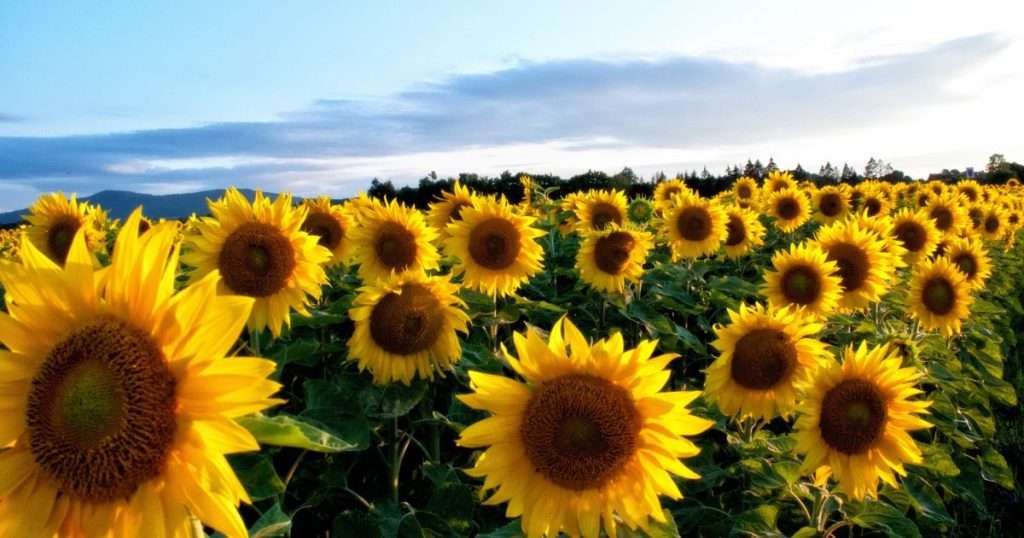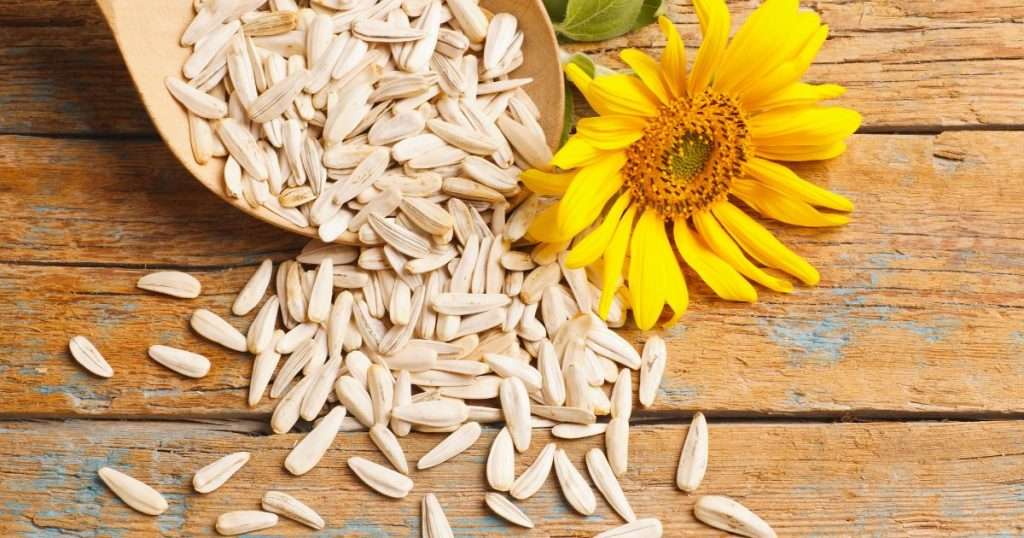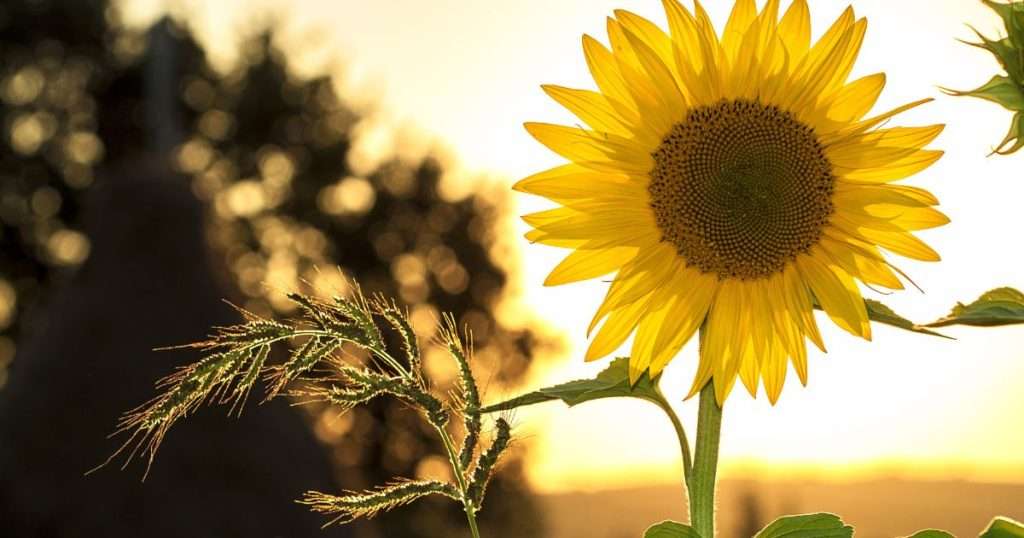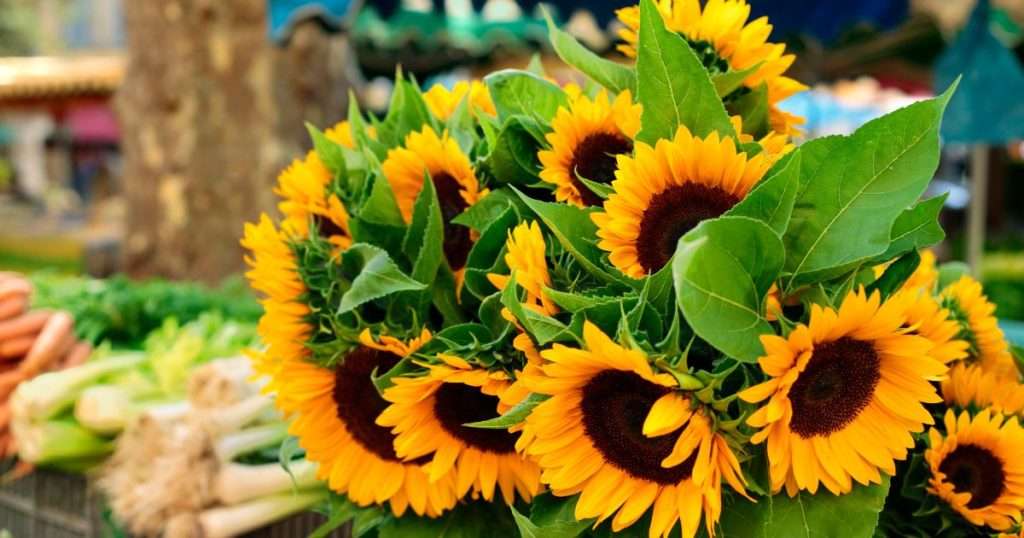Table of Contents
In the world of floral preservation, few blossoms capture the essence of nature’s beauty quite like sunflowers. With their vibrant hues, impressive size, and iconic shape, these cheerful flowers have become a coveted centerpiece for artistic arrangements and sentimental keepsakes.
However, preserving sunflowers can be a delicate art that requires precise techniques to maintain their stunning appearance over time. This article will delve into the expertise needed to master the fine art of drying sunflowers. Whether you are an aspiring florist or simply a lover of nature’s splendor, our expert tips will guide you step by step on preserving the captivating allure of sunflowers.
Selecting The Perfect Sunflowers For Drying
When choosing sunflowers to dry, there are a few essential factors to consider.
- First and foremost, you want to select flowers in their prime bloom stage.
- Look for sunflowers with vibrant and fully open petals as they retain color and shape during drying.
- Another critical consideration is the size of the flower head. Opt for larger-sized sunflower varieties, as they dry better than smaller ones.
- Ensure that the flower heads are not damaged or wilted before picking them. It will help maintain their overall appearance once dried.
- Pay attention to the stem length when selecting sunflowers for drying. Longer stems make hanging or displaying your dried flowers easier after they have been preserved.
Harvesting Sunflowers At The Right Time
- Harvesting them at the right time is crucial to preserve the beauty and freshness of sunflowers.
- The ideal time for harvesting sunflowers is when the petals have fully opened and started to droop slightly.
- Look for firm, yellow, or golden-yellow petals with minimal browning or wilting.
- Avoid harvesting sunflowers too early when their petals are tight and closed, as they may not fully develop after being cut.
- Wait until the back of the flower head turns green to pale yellow before cutting.
Methods for Harvesting Sunflowers
- When harvesting sunflowers, use sharp garden shears or pruners to make clean cuts on sturdy stems.
- Cut the stem about 12 inches below the flower head to allow space for later drying and handling without damaging other plant parts.
- As you cut each sunflower, immediately place it in a bucket filled with room-temperature water. It helps keep them hydrated until further processing.
Remember that proper timing and technique in harvesting will lay a solid foundation for preserving your beloved sunflowers.

Preparing Sunflowers For The Drying Process
Here are the steps to prepare sunflowers for the drying process.
Choose fully-bloomed sunflowers
Select sunflowers in full bloom, with vibrant colors and firm petals. Avoid picking sunflowers that are wilting or showing signs of discoloration.
Remove excess leaves and stems.
Gently remove any leaves from the sunflower’s stem, as they can trap moisture and lead to mold during drying. Trim off any extra stems to ensure a clean appearance.
Hang them upside down.
Tie string or twine securely around the base of each sunflower stem and hang them upside down in an excellent, dry location with good air circulation. It helps preserve their shape as they dry.
Allow sufficient time for drying.
Sunflowers may take anywhere between one to two weeks to completely dry. Avoid moving or disturbing them during this period to prevent damage or premature breakage.
Following these simple steps, you can ensure that your sunflowers retain their natural beauty even after drying.
Air Drying vs. Using a Dehydrator: Pros and Cons
Here are the pros and cons of air drying and drying with dehydrators.
Air Drying
- It requires no special equipment, making it a cost-effective option.
- Maintains the natural appearance of sunflowers, as they are left to dry naturally.
- It can take several weeks for sunflowers to dry thoroughly, requiring patience and proper storage to prevent mold or rot.
Using a Dehydrator
- It provides a faster drying process, with sunflowers typically drying in just a few days.
- Preserves the bright colors of sunflowers due to the controlled temperature and airflow
- Requires an initial investment in a dehydrator, which can be costly.
In short, air drying is a budget-friendly method that preserves the natural beauty of sunflowers but takes longer.
On the other hand, using a dehydrator offers faster results while maintaining vibrant colors but requires an upfront investment. Ultimately, choosing between air drying and using a dehydrator depends on your specific needs and preferences.

Using Silica Gel For Drying Sunflowers: Tips And Tricks
Silica gel is a highly effective drying agent that can preserve sunflowers’ vibrant colors and shape. It works by absorbing moisture from the flower, preventing mold or decay during drying. Silica gel is readily available at craft stores or online, making it a convenient option for preserving sunflowers.
Preparing the Sunflowers for Drying
Before using silica gel on your sunflowers, remove excess foliage and trim the stems to an appropriate length. It will ensure that only the flower heads are being dried, allowing them to maintain their natural beauty. Gently brush off any dirt or debris from the petals, as even tiny particles can interfere with drying.
Properly Applying Silica Gel
To dry sunflowers with silica gel, simply pour enough beads into a plastic container to completely cover each blossom. Carefully place one flower head at a time into the container and cover it entirely with more silica gel beads. Ensure to keep the container manageable, which could lead to uneven drying results.
By following these tips and utilizing silica gel properly when drying your sunflowers, you can preserve their stunning appearance while capturing their enduring beauty in a lasting form.
Preserving Sunflowers’ Vibrant Colors
The vibrant colors of sunflowers can be preserved by following a few essential steps. First, choosing sunflowers at their peak freshness and beauty is crucial. It ensures that they retain their vivid hues throughout the drying process.
Once you have selected your sunflowers, it is essential to dry them in a dark and well-ventilated area. Direct sunlight exposure can cause fading, so keeping them in a shady spot is critical.
Additionally, allowing air to circulate the flowers prevents moisture buildup, which can lead to discoloration. To preserve the rich yellows and oranges of sunflowers, avoid handling them too much during drying. Touching or moving the petals excessively can damage and cause color loss. Letting nature take its course is often best when drying these magnificent blooms.
Strategies for Preserving Color
In addition to proper drying techniques, there are some strategies you can employ explicitly targeting color preservation:
- Avoid chemical treatments: Skip any chemicals or preservatives when drying sunflowers, as they can interfere with color retention.
- Seal dried flowers: Consider sealing your dried sunflowers with a clear spray sealant designed for botanicals to protect against dust accumulation and help maintain color vibrancy over time.
- Keep away from heat: Sunflowers should be kept away from direct heat sources, such as radiators or fireplaces, as excessive heat exposure can cause fading.
- Handle with care: When drying sunflowers for display or storage, always do so gently to prevent flaking or loss of color particles.
Implementing these practices will ensure that your dried sunflowers remain beautiful and vibrant for years, adding an artistic touch wherever they are displayed.

Avoiding Mold And Mildew: Essential Steps For Successful Drying
To prevent the growth of mold and mildew while drying sunflowers, follow these essential steps:
- Choose a well-ventilated area: Select a location with good airflow to help dry the flowers quickly and minimize moisture accumulation.
- Remove excess water: Shake off water from the sunflowers before drying to reduce moisture content.
- Hang upside down: Tie a string or wire around the stems and hang the sunflowers upside down in a cool, dry place. This position allows gravity to help drain any remaining moisture from the petals, reducing the risk of mold or mildew development.
- Avoid humidity: Avoid areas such as basements or bathrooms to keep the drying area free from excessive moisture. Consider using dehumidifiers if necessary.
- Check regularly: Monitor your sunflowers daily during the drying process to ensure they are not showing any signs of mold or mildew growth. Remove the affected flowers immediately if you notice any spots or discoloration on the petals.
Following these steps will help preserve beauty and longevity as you embark on this artful endeavor of drying sunflowers.
Monitoring The Drying Process: Signs Of Readiness
After harvesting and hanging sunflowers to dry, monitoring the drying process closely is essential.
Here are some signs that indicate your sunflowers are ready:
- Petals: As the drying progresses, the sunflower petals will wither and turn brittle. Gently touch a few petals to see if they crumble easily in your fingers – a good indicator that your sunflowers are nearing their dried state.
- Seeds: The seeds inside the sunflower head play a crucial role in determining its readiness for preservation. When they become dark gray or black and dry up completely, you can confirm that your sunflowers have finished drying.
- Stem: Examining its stem is one reliable way to check if your sunflower is thoroughly dried. If it feels firm and no longer releases moisture when squeezed lightly, then it’s safe to say that your beautiful flowers have completed their drying journey.
Remember, patience is critical when monitoring the drying process of sunflowers. By paying attention to these signs of readiness, you can flawlessly preserve their natural beauty while embracing nature’s artistry.
Storing Dried Sunflowers: Best Practices For Longevity
Here are the best practices for longevity.
Finding The Right Container
- Choose a clean, dry, and air-tight container to protect your dried sunflowers from pests and moisture.
- Consider using containers of plastic or glass jars with airtight lids to maintain freshness.
Keeping It Cool And Dark
- Store your dried sunflowers in a cool, dark place away from sunlight to prevent fading of colors.
- Avoid areas with high humidity as it can cause mold or mildew growth on the flowers.
Moisture Control
- Place silica gel packets or rice grains in the storage container to absorb any lingering moisture and help prolong the life of your dried sunflowers.
- Check regularly for signs of mold or dampness. If you notice any, remove the affected flowers immediately.
By following these best practices for storing dried sunflowers, you can ensure their longevity and preserve the natural beauty they bring into your home. Remember to check them periodically during storage for any signs of damage or deterioration.
Displaying Dried Sunflowers: Creative Ideas For Showcasing Nature’s Beauty
Dried sunflowers are a stunning natural element that can add beauty and charm to any space. Consider using these creative ideas to showcase the preserved splendor of these vibrant flowers:
- Wall hangings: Arrange a cluster of dried sunflower heads and stems, tie them together with rustic twine, and hang them on your wall for an eye-catching display.
- Floral wreaths: Craft a wreath by intertwining dried sunflowers with foliage or other complementary flowers, creating timeless art to adorn your front door or indoor living spaces.
- Table centerpieces: Place dried sunflowers in vases or mason jars as standalone pieces or mixed with other dried flora, such as wheat stalks or lavender sprigs, adding rustic elegance to any table setting.
Remember to experiment with different arrangements and combinations, showcasing nature’s beauty in artistic ways throughout your home or event space.

Troubleshooting Common Issues In Drying Sunflowers
1. Wilting Flowers
To combat wilting, choose sunflowers that are just starting to open and are still tightly packed with petals. Avoid flowers with drooping or discolored petals, as they may not dry well. Additionally, ensure the sunflowers are adequately hydrated before drying by placing their stems in a vase of water for a few hours before drying.
2. Mold and Mildew Growth
Mold and mildew can develop if the sunflowers are not dried in a well-ventilated area or if excess moisture is present during the drying process. To prevent this issue, spread the sunflowers evenly on a mesh screen or hang them upside down in a cool, dry location away from direct sunlight. Check regularly for signs of mold or mildew and discard any affected flowers immediately.
3. Loss of Color and Vibrancy
Sunflowers may lose their bright color and vibrancy if exposed to excessive heat or light during drying. To preserve their original beauty, position them in an area where they will receive indirect sunlight and maintain a consistent temperature of around 70°F (21°C). Avoid hanging them near windows or heating vents that could cause uneven drying and discoloration.
Conclusion
The ancient secret of drying sunflowers has been unveiled through the expertise of experienced gardeners and horticulturists. Following these expert tips, anyone can successfully dry their sunflower heads to preserve their beauty and use them for various purposes.
From choosing the right time to harvest the flowers to properly preparing and storing them, these techniques have stood the test of time and proven effective. So, whether you want to create stunning floral arrangements or save seeds for future planting, don’t hesitate to try out these tried-and-true methods. With a little knowledge and attention to detail, you can enjoy the captivating beauty of dried sunflowers in your home or garden all year round.
